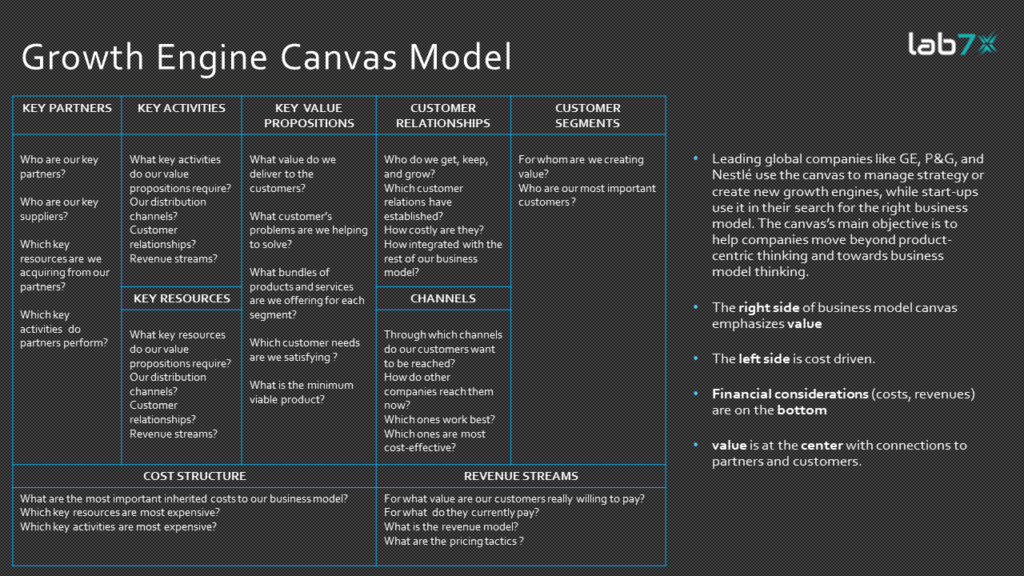
Value Proposition
Lab7X Business & IT Consulting
A value proposition is a promise of value to be delivered, communicated, and acknowledged…
A value proposition is a positioning statement that explains what benefit you provide for who and how you do it uniquely well. It describes your target buyer, the problem you solve, and why you’re distinctly better than the alternatives As you set out to create YOUR compelling value proposition, consider the following four steps: read below

Let’s resolve your company’s challenges together
The four step process is Define, Evaluate, Measure and Build:
DEFINE the problem set to help vet whether it’s a problem worth solving
A significant part of defining a value proposition involves answering the following questions:
- Is the problem Unworkable?
- Does your solution fix a broken business process where there are real, measurable consequences to inaction?
- Will someone get fired if the issue is not addressed?
- * If the answer is yes – then that person will likely be your internal champion.
- Is fixing the problem Unavoidable?
- Is it driven by a mandate with implications associated with governance or regulatory control? For example, is it driven by a fundamental requirement for accounting or compliance? *If the answer is yes; then that group will likely be a champion.
- Is the problem Urgent?
- Is it one of the top few priorities for a company?
- In selling to enterprises, you’ll find it hard to command the attention and resources to get a deal done if you fall below this line. *If the answer is yes; then you know you’ll have the attention of the c-suite.
- Is the problem Under-served?
- Is there a visible absence of valid solutions to the problem you’re looking to solve? Focus on the white-space in a market or segment. *If the answer is yes; then you know the market is primed for the solution.
EVALUATE whether your breakthrough is unique and compelling
After you determined the problem you’re solving and validated its criticality, ask yourself: What is unique and compelling about your breakthrough?
A useful approach is to think of what unique combination of Discontinuous innovation, Defensible technology, and Disruptive business model are you bringing to bear and what makes it truly compelling to your most skeptical customer?
- Discontinuous innovations: Offer transformative benefits by looking at a problem differently.
- Defensible technology: Offers intellectual property that can be protected to create a barrier to entry and an unfair competitive advantage.
- Disruptive business models: Yield value and cost rewards that help catalyze the growth of a business.
Simply having a product or service that is faster, cheaper and better is not enough to make it compelling, but evaluate it with the above criteria and you can really open up the potential for a breakout.
MEASURE potential customer adoption using the Gain/Pain Ratio
Don’t only focus on features but how easy to used by the customer. So the Gain/Pain ratio involves measuring the gain you deliver the customer vs the pain and cost for the customer to adopt. If you can’t deliver a 10x gain/pain promise, customers will typically default to “do nothing” rather than bearing the risk of working with you.
Here is another great tool (the canvas) by Strategyzer for developing the value proposition, business model, and etc.

